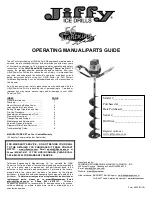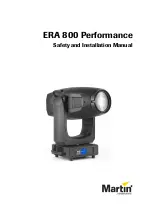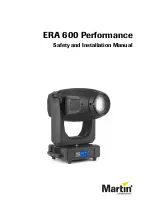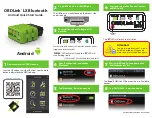
3
I. Cautions and Warnings
A. Cautions
Never use any sample hose other than those approved for use with the ID900. The use of other hose types may introduce
errors and excessive refrigerant loss.
Always verify that the refrigerant source to be tested will not emit oil or liquid refrigerant before connecting the ID900
sample hose.
Never connect the ID900 to any refrigerant source that exceeds 300-psi pressure.
Do not utilize the coupling supplied on the ID900 R134a sample hose for any purpose other than ID900 sampling. The
coupler supplied on the R134a hose does not contain check valves and will continually vent refrigerant.
Never obstruct the sample exhaust or air intakes of the instrument during use.
Do not throw, drop, immerse in liquid or otherwise mistreat the instrument.
Always store the instrument in its storage case when not in use.
Maintain the cleanliness of the instrument at all times to prevent contamination and prolong life.
B. Warnings
Read and understand this manual before attempting to utilize the instrument.
Flammability Warning:
The ID900 is not capable of direct detection and indication of the presence of hydrocarbon
compounds. Hydrocarbon compounds may present a flammability hazard when present in sufficient concentrations. The
user is cautioned that whenever the ID900 indicates that unknown contaminates are present the potential exists for a
hydrocarbon flammability hazard.
Sample Filter Warning:
Always inspect the outside diameter of the white sample filter element before and after each use
of the instrument. As soon as red spots begin to appear on any portion of the white element outside diameter the filter will
require replacement. Failure to replace the filter when so indicated may result in out of warranty damage to the instrument.
Sample Input Warning:
The instrument requires connection of the sample hose to the low or vapor side port of the
source vehicle or refrigerant cylinder. Connection of the sample hose to the high or liquid port of the source vehicle or
refrigerant cylinder will result in out of warranty damage to the instrument. Additionally, the low side or vapor port shall
not emit sample gas in excess of 300 psig or sample gas that contains oil or liquids.
Sample Hose Warning:
Always inspect the sample hose before and after each use of the instrument. Immediately replace
the hose if it appears cracked, crazed, obstructed or fouled with oil.
When testing vehicle air conditioning systems make sure that the vehicle is turned off and not running. This will prevent
EMI/RFI problems as well as eliminate potential user hazards from moving parts of the vehicle.
Air Sensor Warning:
The air detection sensor is a chemical fuel cell sensor that will expire after 6-15 months of
operation. The user must replace the air detection sensor whenever the instrument indicates as such. Failure to replace the
air detection sensor will result in non-functionality of the instrument.
Always
wear eye and skin protection when working with refrigerants. Escaping refrigerant vapors can freeze upon contact.
DO NOT
direct refrigerant vapors escaping from the sample hose towards exposed skin or the face.
Connection to Power Sources greater than 14VDC could cause “Out of Warranty” damage.
Connection to a battery which is not fully charged or is smaller than a typical car battery, may cause errors in reading.
If using the optional wall power adapter, be sure the voltage rating of the adapter (115 or 230 VAC inlet) matches the AC
power source.
DO NOT
use wall power adapter in areas where it could get wet.
TO REDUCE THE RISK OF BATTERY EXPLOSION DUE TO SPARK GENERATION:
First Connect the
RED
clip to the positive 12 volt battery terminal; then, connect the
BLACK
clip to a metal ground location away from the 12
volt battery.





























